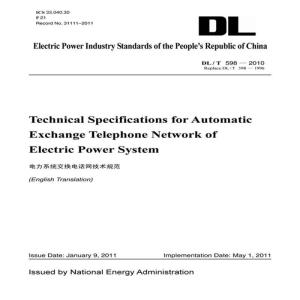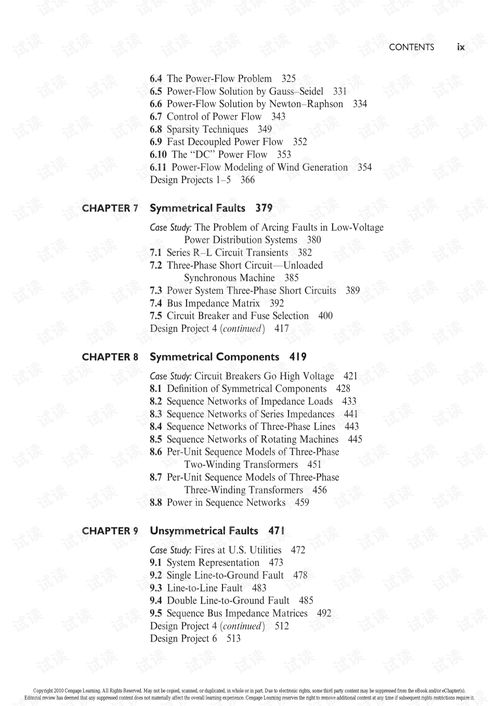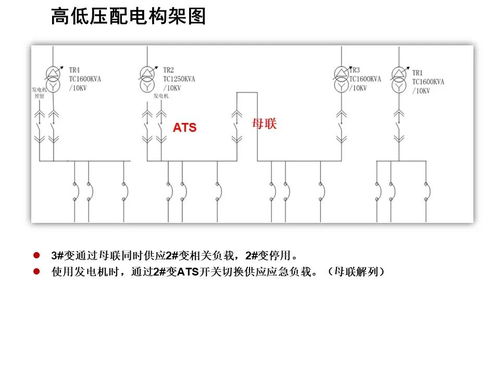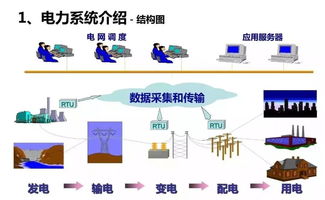
电力系统介绍英文,Introduction to Electric Power Systems
时间:2024-12-01 来源:网络 人气:
Introduction to Electric Power Systems

Electric power systems are the backbone of modern society, providing the energy that powers our homes, industries, and transportation. This article aims to provide an overview of electric power systems, their components, and their significance in the global energy landscape.
Components of an Electric Power System

An electric power system is a complex network of interconnected components that work together to generate, transmit, distribute, and consume electrical energy. The key components include:
Generating Stations: These are facilities where electrical energy is produced from various sources, such as fossil fuels, nuclear energy, hydroelectric power, wind, and solar energy.
Transmission Lines: High-voltage transmission lines carry electricity from generating stations to distribution substations over long distances. These lines are designed to minimize energy loss during transmission.
Transformers: Transformers are used to step up the voltage for transmission and step it down for distribution to consumers. They play a crucial role in maintaining the stability and efficiency of the power system.
Substations: Substations are facilities where voltage levels are adjusted, and power is distributed to various consumers. They also provide protection and control functions for the power system.
Power Distribution Networks: These networks deliver electricity to consumers, including residential, commercial, and industrial users. They are designed to ensure reliable and safe power supply.
Consumers: These are the end-users of electrical energy, including homes, businesses, and public institutions.
Generation of Electrical Energy

The generation of electrical energy is the first step in the power system. Different types of generating stations produce electricity using various sources:
Thermal Power Plants: These plants use fossil fuels like coal, oil, and natural gas to generate steam, which drives turbines to produce electricity.
Nuclear Power Plants: Nuclear power plants use nuclear fission to produce heat, which then generates steam to drive turbines.
Hydroelectric Power Plants: These plants use the energy of flowing water to turn turbines and generate electricity.
Renewable Energy Sources: Renewable energy sources, such as wind, solar, and geothermal, are increasingly being used to generate electricity. These sources are considered sustainable and have a lower environmental impact compared to fossil fuels.
Transmission and Distribution of Electrical Energy

After electricity is generated, it must be transmitted over long distances to reach consumers. This is done through high-voltage transmission lines, which minimize energy loss. Once the electricity reaches the distribution substations, transformers step down the voltage to a level suitable for distribution to consumers. The power distribution networks then deliver electricity to residential, commercial, and industrial users.
Challenges and Innovations in Electric Power Systems

The electric power system faces several challenges, including:
Energy Demand Growth: As the global population continues to grow, so does the demand for electricity.
Environmental Concerns: The burning of fossil fuels contributes to greenhouse gas emissions and climate change. Transitioning to renewable energy sources is essential to mitigate these effects.
Grid Reliability: Ensuring a reliable and stable power supply is crucial for economic and social development.
Smart Grid Technology: The integration of smart grid technology can improve the efficiency, reliability, and sustainability of power systems. Smart grids use advanced communication and control systems to monitor and manage the flow of electricity.
Conclusion

In conclusion, electric power systems are essential for modern life and economic development. Understanding the components, challenges, and innovations in these systems is crucial for ensuring a sustainable and reliable energy future. As the world continues to transition towards renewable energy sources and smart grid technology, the electric power system will play an increasingly important role in shaping our future.
Tags:

Electric Power Systems, Generating Stations, Transmission Lines, Transformers, Substations, Power Distribution Networks, Renewable Energy, Smart Grid Technology, Energy Demand, Environmental Concerns
相关推荐
教程资讯
教程资讯排行











